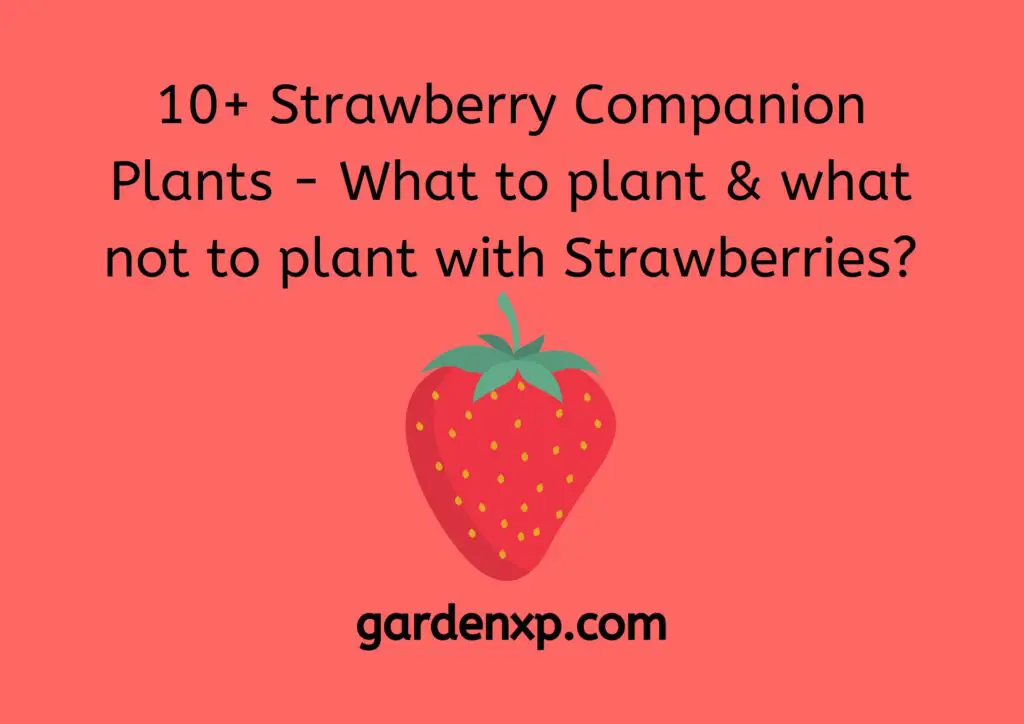In the realm of horticulture, the cultivation of strawberries is regarded as a delicate art form, where even the smallest factors can significantly impact the success of their growth. As avid gardeners have come to realize, selecting the right companions for strawberries proves to be an arduous task, as certain plants can either enhance their growth or inhibit their flourishing altogether. In this article, you will embark on a journey of unraveling the intricate dance between strawberries and their incompatible counterparts, unveiling the perils of ill-planned plant pairings, and ultimately gaining invaluable insights into what not to plant with these delectable fruits.
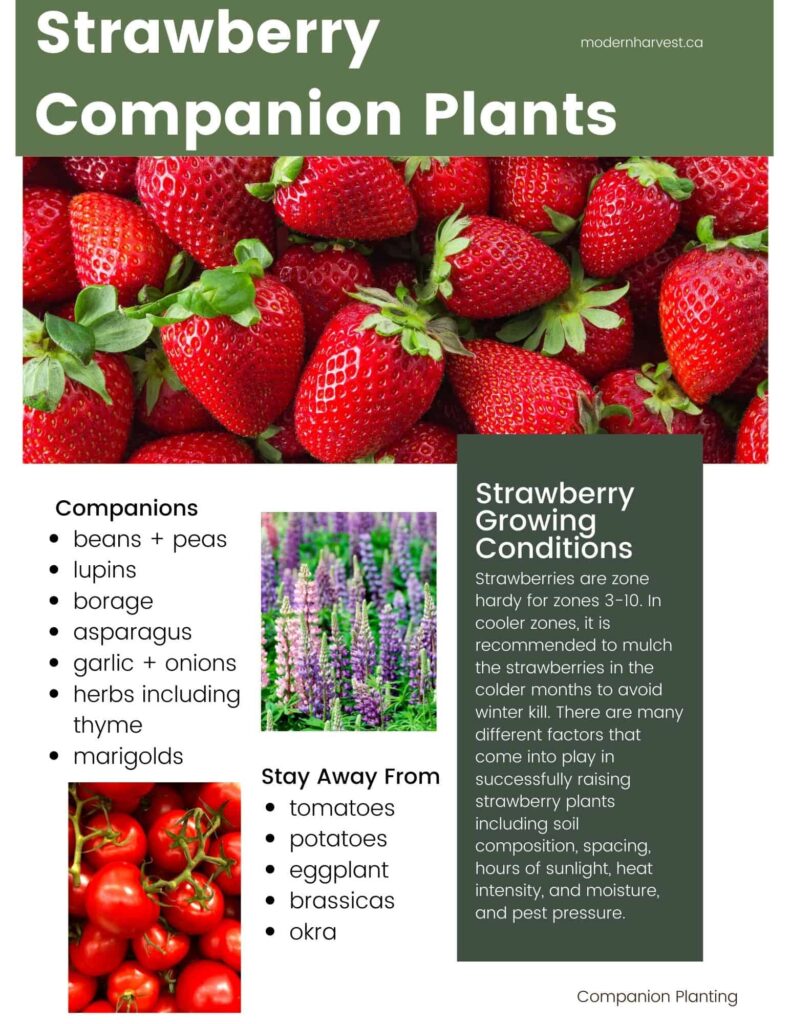
Shade-Producers
Walnut Trees
Walnut trees are known for their dense foliage and ability to provide ample shade. However, planting strawberries near walnut trees should be avoided. This is because walnut trees release a chemical called juglone, which is toxic to many plants, including strawberries. The juglone can seep into the soil and affect the growth and development of strawberry plants, leading to stunted growth, wilting, and even death. Therefore, it is recommended to keep a considerable distance between strawberry plants and walnut trees to ensure the healthy growth of strawberries.
Cedar Trees
Cedar trees are often planted for their aesthetic appeal and ability to provide shade. However, when it comes to growing strawberries, cedar trees can be problematic. Cedar trees produce compounds called thujaplicins, which can inhibit the growth of nearby plants, including strawberries. These compounds can leach into the soil and affect the root systems of the strawberries, hindering their growth and vitality. To avoid any negative impact on your strawberry plants, it is advisable to avoid planting them in close proximity to cedar trees.
Evergreen Trees
Evergreen trees, with their lush green foliage and year-round shade, are commonly planted for their ornamental value. However, when it comes to growing strawberries, caution must be exercised. Evergreen trees, such as pine and fir trees, tend to be quite aggressive in their growth patterns and can compete with strawberries for sunlight, water, and nutrients. This can hinder the development and productivity of strawberry plants. It is advisable to provide an ample distance between strawberry plants and evergreen trees to ensure optimum growth and yield.
High-Nitrogen Plants
Legumes
Legumes, such as peas, beans, and lentils, are revered for their ability to fix nitrogen in the soil. While this characteristic is beneficial for many plants, it can be detrimental to strawberries. High levels of nitrogen in the soil can result in excessive vegetative growth at the expense of fruit production in strawberries. It is recommended to avoid planting strawberries in close proximity to legume crops or to carefully manage the nitrogen levels in the soil to prevent negative effects on strawberry growth.
Brassicas
Brassicas, including cabbage, broccoli, and cauliflower, are known for their high nitrogen requirements. While this makes them excellent choices for soil enrichment, it can have adverse effects on strawberry plants when grown alongside. The high nitrogen levels produced by brassicas can lead to excessive foliage growth and reduced fruiting in strawberries. It is advisable to separate strawberry plants from brassicas or adjust the nitrogen levels in the soil to maintain a balanced growth for both crops.
Corn
Corn, often grown as a staple crop, is known for its high nitrogen demands. This can pose a problem for strawberries when co-planted together. Corn can deplete the soil of nitrogen, leaving insufficient nutrients for strawberry plants to thrive. Additionally, the shade cast by tall corn plants can limit sunlight exposure for strawberries, hampering their growth and productivity. To ensure optimal growth for both crops, it is best to separate strawberry plants and corn or carefully manage nitrogen levels in the soil.

Invasive Groundcovers
Creeping Charlie
Creeping Charlie, also known as ground ivy, is a fast-spreading invasive groundcover that can be detrimental to strawberry plants. Its aggressive growth habit can quickly smother and crowd out the strawberry plants, depriving them of vital resources such as sunlight, water, and nutrients. Additionally, creeping Charlie can be challenging to control once established, making it difficult to maintain a healthy strawberry patch. It is advisable to remove any creeping Charlie from the vicinity of strawberry plants and take preventive measures to prevent its invasion.
Bermuda Grass
Bermuda grass, known for its resilient nature and rapid spreading, can pose a significant threat to strawberry plants. This invasive groundcover can quickly overtake strawberry beds, outcompeting the strawberries for resources and inhibiting their growth. Bermuda grass is known for its strong and extensive root system, which can be challenging to eradicate once it becomes established. It is crucial to keep strawberry beds clear of Bermuda grass and implement regular maintenance practices to prevent its encroachment.
Clover
While clover is often celebrated for its ability to fix nitrogen in the soil and provide beneficial pollinator habitat, it can become problematic in strawberry patches. Clover’s rapid spreading habit and dense growth can overcrowd strawberry plants, limiting their access to sunlight and nutrients. Additionally, clover’s extensive root system can compete with strawberry plants for water and space. To maintain a healthy strawberry patch, it is advised to remove clover from the immediate vicinity of strawberry plants or regularly manage its growth to prevent it from overpowering the strawberries.
Plants Susceptible to Similar Pests and Diseases
Tomatoes
Tomatoes and strawberries are both popular garden crops, but they are susceptible to similar pests and diseases. For example, both crops can fall prey to fungal diseases such as powdery mildew and gray mold. Planting tomatoes near strawberries can increase the risk of these diseases spreading and thriving, as the pathogens can easily transfer between the two crops. It is recommended to provide a sufficient distance between tomato plants and strawberries to minimize the risk of disease transmission and ensure the health of both crops.
Potatoes
Potatoes, like strawberries, are vulnerable to various pests and diseases, including pests like aphids and diseases like potato late blight. Planting strawberries near potatoes can result in an increased incidence of these pests and diseases, as they can readily transfer between the two crops. Additionally, both potatoes and strawberries require specific soil conditions and nutrient levels, which can be challenging to maintain when grown together. To minimize the risk of pest and disease outbreaks and optimize the growth of both crops, it is advisable to separate strawberry plants from potato patches.
Peppers
Peppers share similar susceptibilities to pests and diseases with strawberries, making them incompatible planting companions. Both crops can suffer from common pests, such as aphids and spider mites, as well as fungal diseases like powdery mildew and verticillium wilt. Planting peppers near strawberries can increase the risk of infestations and disease outbreaks, as the pests and pathogens can easily move between the crops. It is wise to maintain a distance between strawberry plants and pepper plants to minimize the potential for pest and disease problems and promote healthy growth for both crops.
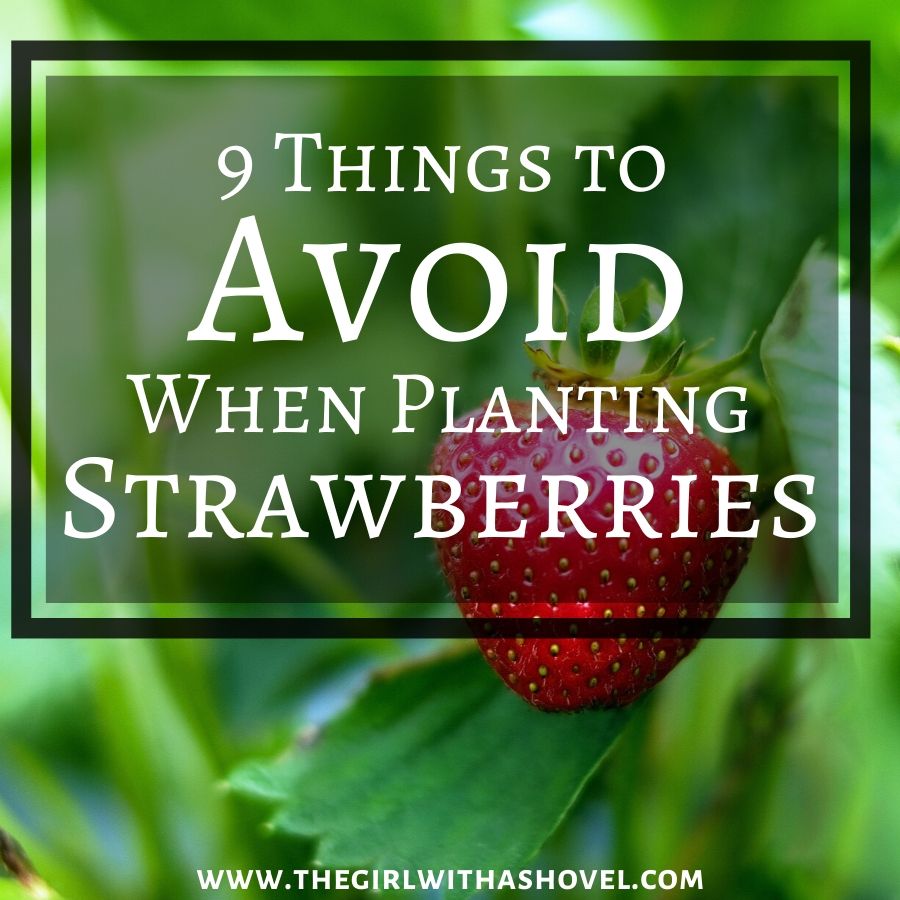
Fragrant Herbs
Mint
Mint, with its strong aromatic properties and vigorous growth, can have both positive and negative effects on strawberries. While some gardeners advocate planting mint near strawberries to deter pests, others suggest keeping them separate. Mint’s rapid spreading habit can quickly overpower strawberry plants, stifling their growth and reducing their productivity. Moreover, mint competes for nutrients and water, potentially depriving the strawberries of essential resources. To ensure optimal growth and prevent the overwhelming spread of mint, it is advisable to keep strawberry plants and mint separated.
Oregano
Oregano, a fragrant herb commonly used in culinary applications, can be a beneficial companion to strawberries. Oregano’s strong scent can help repel pests, discouraging them from attacking the strawberries. Additionally, oregano’s sprawling growth habit can provide ground coverage that suppresses weed growth, reducing competition for resources with the strawberries. However, it is important to regularly prune oregano to prevent it from overshadowing or crowding the strawberry plants. Overall, planting oregano near strawberries can be advantageous for both plants, as long as proper maintenance practices are implemented.
Thyme
Thyme, known for its aromatic leaves and low-growing habit, can be a beneficial companion to strawberries. Thyme’s fragrance can help repel certain pests, reducing the risk of damage to the strawberries. Furthermore, thyme’s compact growth habit allows it to act as an effective ground cover, suppressing weed growth and conserving soil moisture for the strawberries. Additionally, the shallow root system of thyme minimizes competition for nutrients with the strawberry plants. Planting thyme near strawberries can enhance the overall health and productivity of the strawberry patch.
Citrus Trees
Oranges
Citrus trees, such as oranges, can create a beautiful landscape and provide fresh fruits. However, when it comes to strawberries, planting them near orange trees is not recommended. Citrus trees have specific soil requirements and tend to be heavy feeders, competing with strawberries for nutrients. Additionally, the shade cast by the tall and dense canopy of orange trees can limit sunlight exposure for strawberries, affecting their growth and fruiting. To ensure optimal conditions for both crops, it is best to separate strawberry plants from orange trees.
Lemons
Lemon trees, with their vibrant fruits and fragrant blossoms, can be an attractive addition to any garden. However, caution should be exercised when considering planting strawberries near lemon trees. Lemon trees have similar nutrient requirements to strawberries and can compete for vital resources. Moreover, lemon trees tend to cast shade on the ground beneath them, depriving strawberries of the sunlight they need for photosynthesis. To ensure the healthy growth of both crops, it is advisable to maintain a suitable distance between strawberry plants and lemon trees.
Grapefruits
Grapefruit trees, known for their juicy and tangy fruits, can add a refreshing touch to any orchard. However, growing strawberries near grapefruit trees may not yield favorable results. Grapefruit trees have high nutrient demands and can deplete the soil of essential resources, leaving strawberries struggling to thrive. Additionally, the dense foliage of grapefruit trees can create shade, reducing the amount of sunlight reaching the strawberry plants. It is important to maintain proper spacing between strawberry plants and grapefruit trees to ensure optimum growth and productivity for both crops.
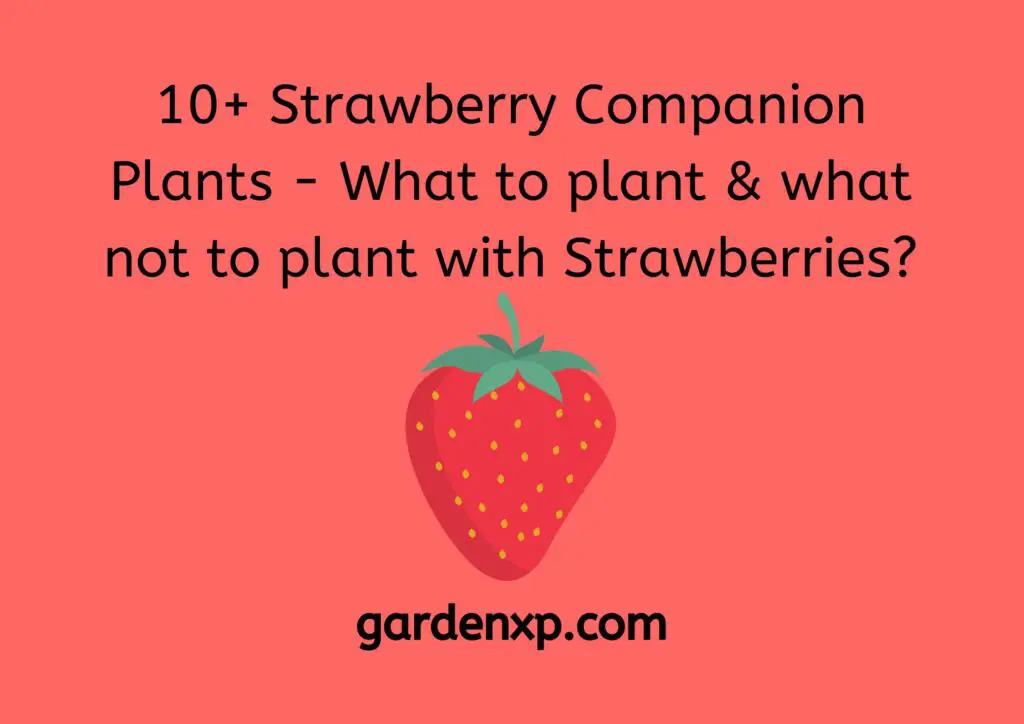
Brassicas
Cabbage
Cabbage is a leafy green vegetable often grown for its dense and nutrient-rich leaves. While cabbage and strawberries are both valuable crops, planting them together is not advisable. Cabbage plants can grow quite large and dense, shading out the strawberries and limiting their access to sunlight. Additionally, the close proximity between cabbage and strawberries can increase the risk of disease transfer and pest infestations. To foster the optimal growth of both crops, it is recommended to keep adequate spacing between cabbage plants and strawberry patches.
Kale
Kale, a nutritious leafy green vegetable, is highly regarded for its health benefits and culinary versatility. However, when it comes to growing strawberries, planting them alongside kale can be problematic. Similar to cabbage, kale plants can grow quite tall and densely, leading to shading of the strawberries. Furthermore, kale and strawberries can attract similar pests and diseases, increasing the risk of infestations and outbreaks. To ensure optimal growth for both crops and minimize the risk of disease transmission, it is advisable to separate strawberry plants from kale.
Broccoli
Broccoli, a popular cruciferous vegetable, is celebrated for its nutritional value and distinctive taste. While broccoli can be a fantastic addition to a vegetable garden, it is not an ideal companion for strawberries. Broccoli plants can become tall and robust, creating excessive shade for strawberries and hindering their growth. Additionally, broccoli and strawberries share similar susceptibility to pests and diseases, leading to increased risk of infestations and infections. To promote the healthy growth of both crops, it is advisable to keep sufficient distance between broccoli and strawberry plants.
Fennel
Fennel Bulbs
Fennel bulbs, with their aromatic and licorice-like flavor, are often used in cooking and herbal medicine. While fennel bulbs have their uses, planting them near strawberries is not recommended. Fennel bulbs have deep and extensive root systems, which can compete with strawberry plants for water and nutrients. Moreover, the tall and feathery foliage of fennel bulbs can overshadow the strawberry plants, limiting their access to sunlight. To ensure optimal growth and productivity for both crops, it is advisable to separate strawberry plants from fennel bulb plantings.
Fennel Seeds
Fennel seeds, commonly used as a spice, have their own set of considerations when it comes to planting them near strawberries. While fennel seeds do not exhibit the same competitive traits as fennel bulbs, they can still pose certain challenges. The aromatic compounds released by fennel seeds can attract pests like aphids, which can potentially harm the strawberries. Additionally, cross-pollination between fennel seeds and strawberries can lead to undesirable traits in the strawberry plants. It is recommended to keep a significant distance between strawberry plants and fennel seed plantings to avoid these potential complications.
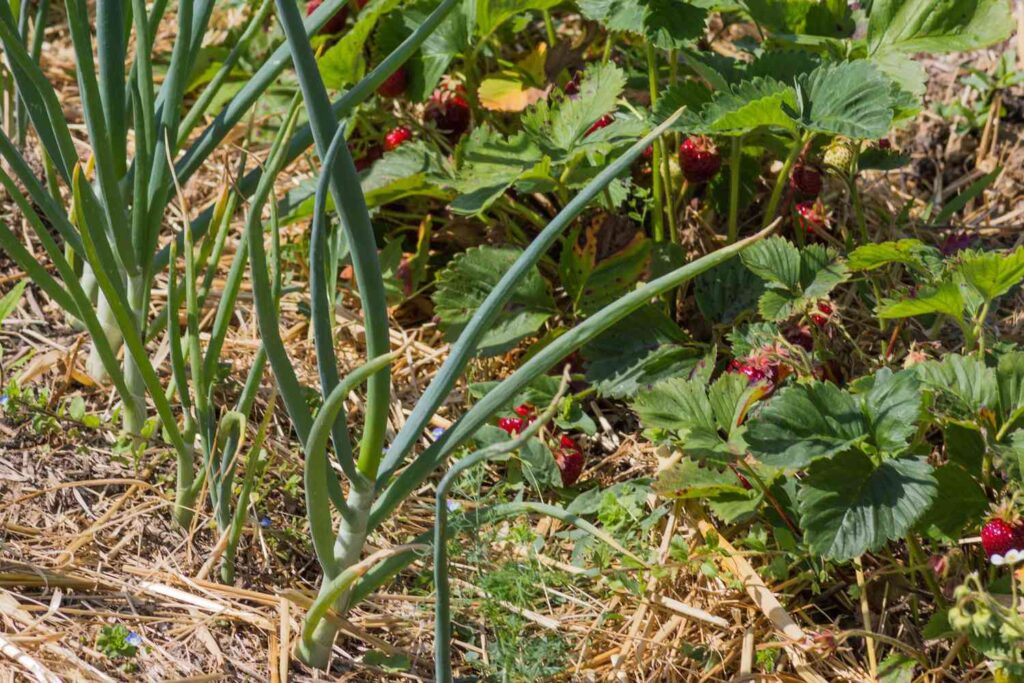
Alliums
Onions
Onions, with their pungent and flavorful bulbs, are widely used in cooking around the world. While onions can be a valuable addition to a vegetable garden, planting them near strawberries should be approached with caution. Onions have vigorous root systems that can compete with strawberry plants for nutrients and water. Additionally, onions emit sulfur compounds that can potentially harm the strawberries. To ensure the healthy growth of both crops, it is advisable to provide adequate spacing between onion and strawberry plants.
Garlic
Garlic, known for its distinctive aroma and culinary uses, can present challenges when planted near strawberries. Garlic, like onions, has a competitive root system that can deprive strawberry plants of essential resources. Furthermore, garlic’s pungent scent can deter pollinators, potentially affecting the pollination and fruit set in strawberries. To prevent these negative effects, it is best to separate garlic and strawberry plants or provide sufficient spacing to avoid competition and ensure successful growth for both crops.
Shallots
Shallots, characterized by their mild onion-like flavor, are often grown for culinary purposes. Although shallots can be a great addition to any vegetable garden, their proximity to strawberries can cause undesirable outcomes. Shallots have shallow root systems that can potentially interfere with the root development of strawberry plants. Moreover, shallots, like other alliums, release sulfur-based compounds that can be detrimental to strawberries. To maintain the health and vigor of both crops, it is recommended to separate strawberry plants from shallot plantings or provide adequate spacing between them.
Flowers
Marigolds
Marigolds, with their vibrant and eye-catching blooms, are commonly used as ornamental plants in gardens. While marigolds can have beneficial properties, planting them near strawberries might not be advantageous. Marigolds can produce allelopathic chemicals, which can inhibit the growth of neighboring plants, including strawberries. Additionally, marigolds can attract certain pests, such as aphids, which can potentially harm the strawberries. To avoid any negative impact on strawberry plants, it is advisable to keep marigolds at a suitable distance from strawberry patches.
Petunias
Petunias, with their wide range of colors and cascading growth habit, are popular choices for garden beds and containers. However, when it comes to growing strawberries, planting them near petunias can pose certain challenges. Petunias have sprawling growth patterns that can encroach upon strawberry plants, limiting their space and access to resources. Additionally, petunias can attract pests like thrips and spider mites, which can potentially affect the strawberries. To ensure optimal growth and productivity for strawberries, it is recommended to maintain adequate spacing between petunias and strawberry plants.
Chrysanthemums
Chrysanthemums, renowned for their diverse colors and long-lasting blooms, are often grown for their aesthetic value. While chrysanthemums can enhance the visual appeal of a garden, planting them near strawberries may not yield the desired outcomes. Chrysanthemums can produce allelopathic chemicals, which can inhibit the growth and development of neighboring plants, including strawberries. Additionally, chrysanthemums can attract pests like aphids, which can potentially harm the strawberries. To ensure the healthy growth of strawberries, it is advisable to maintain a suitable distance between chrysanthemums and strawberry plants.
In conclusion, while strawberries are a delightful and versatile fruit to grow, it is essential to consider their companion plants carefully. By avoiding certain plants that can negatively affect strawberry growth, such as shade-producers like walnut trees and invasive groundcovers like creeping Charlie, gardeners can ensure an optimal environment for their strawberry plants. Additionally, understanding the mutual incompatibilities between strawberries and plants susceptible to similar pests and diseases, such as tomatoes and potatoes, can help prevent detrimental infestations and infections. With proper knowledge and planning, gardeners can cultivate thriving strawberry patches and enjoy the bountiful harvests they provide.
